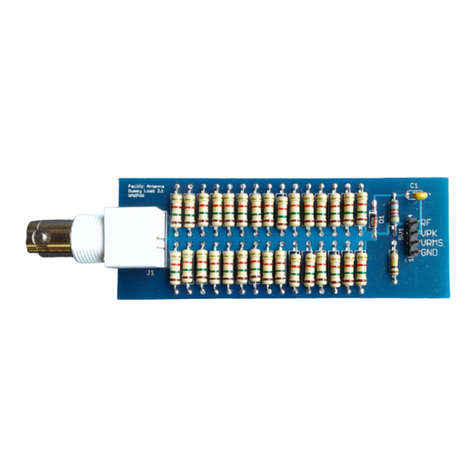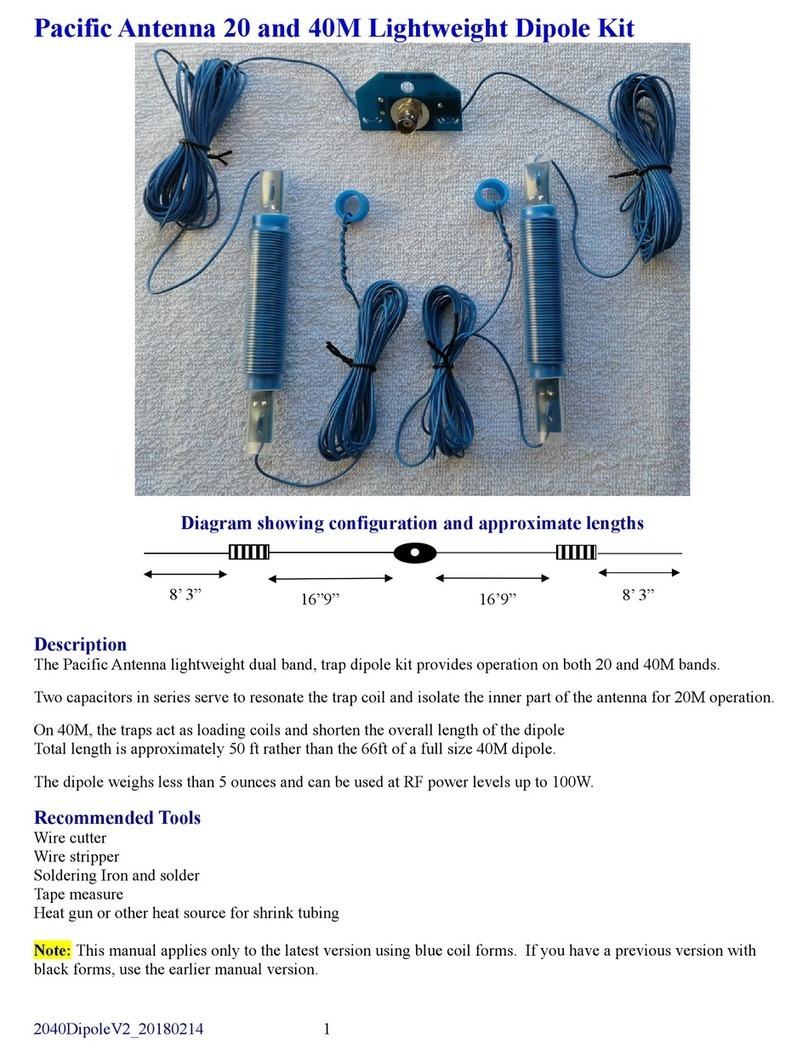
Mount the BNC in the plate and secure using its nut. The BNC
connectors ay be supplied with a red rubber gasket that should
be re oved before installation
Install the stainless wing nut screw onto the end of the 1/4-20
bolt in the center. It is used to secure the ring ter inals for
connection of the radials.
Once the BNC is securely installed, use the sections of green
and red wire to connect fro the BNC to the cri p ter inals.
The red wire goes the center ter inal of the BNC. The red wire
will indicate the antenna end of the feed point.
Measure the necessary wire and cri p and or solder the
ter inals to the wire. Next, re ove each screw and place it
through the ring ter inal and reattach to the end cap.
This co pletes the asse bly of the feed point insulator. Check for continuity using an
oh eter between the center and shell of the BNC and the end caps of the antenna. Resistance
readings should be no ore than one or two oh s including the eter lead resistance. Also
verify that there is no short by checking resistance between the end caps or across the BNC.
Resistance should read very large or infinite here.
Note that the feed point insulator is sy etric. This feature allows the antenna to be used as a
dipole as well as a vertical. When used as a dipole, the bolt in the center serves as the antenna
support point for attaching to a ast. When using the antenna as a vertical, ake sure to install
the feed point insulator with the center conductor of the BNC connected to the antenna and the
shell to the radials.
PAC-12 standard oil kit assembly
Full size oil kit assembly
Note: If asse bling the ulti-band coil version, skip ahead to that section.
Parts:
PVC oil form, light gray (1)
Aluminum end aps (2)
8-32 x 3/8” Phillips s rews (4)
#8 internal tooth lo k washers (4)
#8 rimp ring terminals (2)
#18 enameled opper wire
PAC12_Manual
V3.0_20160712































